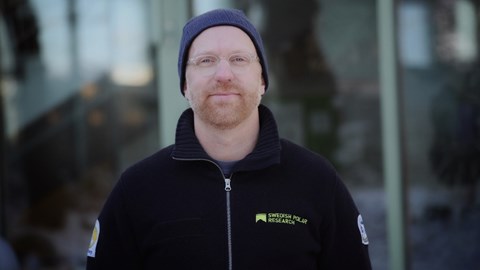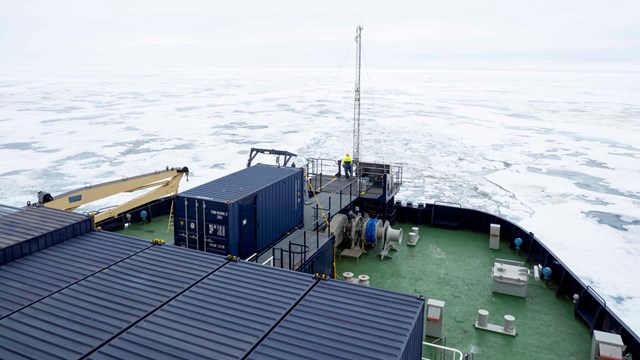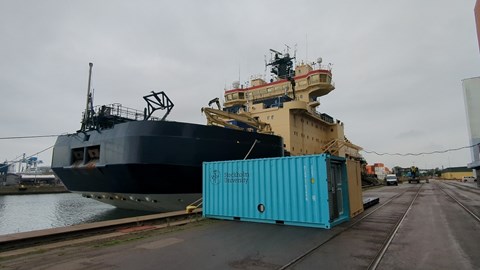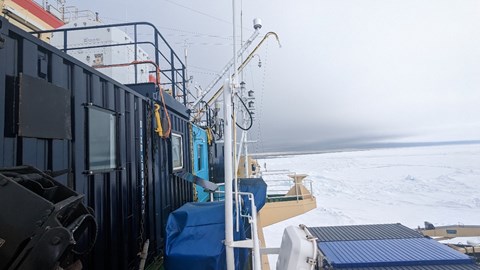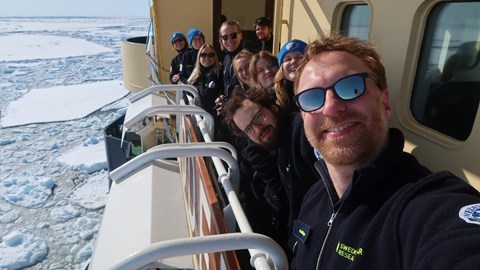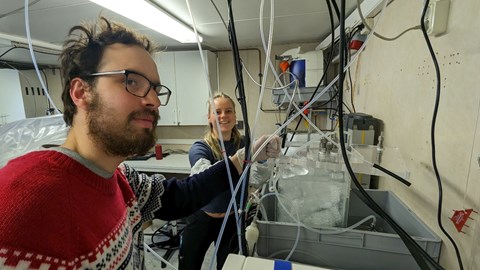Arctic clouds and aerosols – one of the keys to understanding the climate
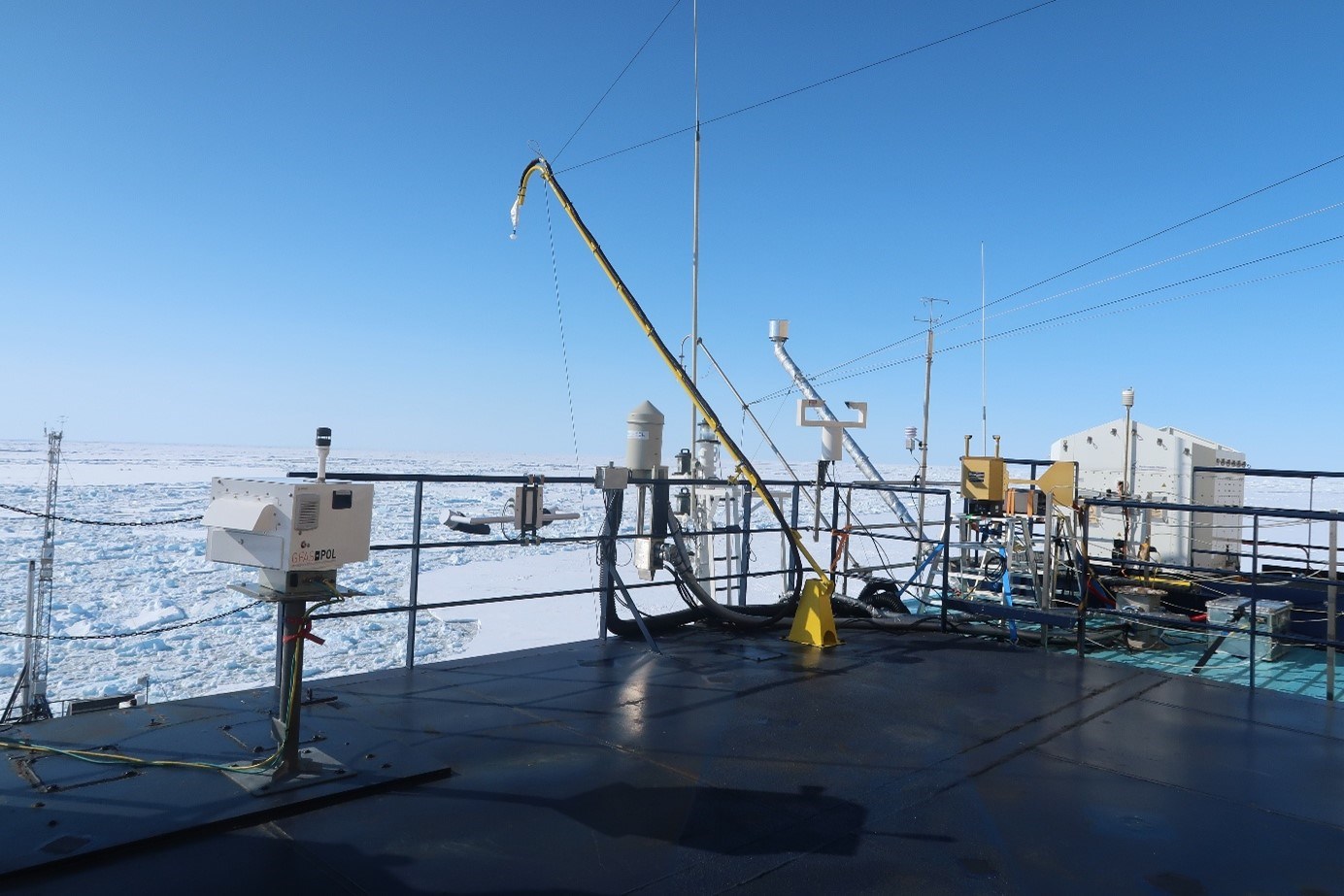 Air intakes and cloud probes on top of the triplet lab and the ACES container. Photo: Paul Zieger
Air intakes and cloud probes on top of the triplet lab and the ACES container. Photo: Paul Zieger
During May and June 2023, the polar expedition ARTofMELT was carried out with the icebreaker Oden. One of the research projects was about characterizing atmospheric aerosol particles and clouds and was led by the expedition's Co-Chief Scientist Paul Zieger. Using a state-of-the-art mobile laboratory, the researchers studied aerosol particles and the processes that lead to cloud formation.
– Clouds in the High Arctic are important because they regulate how energy is transported from and to the ice, affecting the formation or melting of the sea ice. But for every cloud droplet and ice crystal, you need an aerosol particle on which the water vapour can condense. These aerosol particles can come from natural sources, for example, from the sea or the ice, but they can also be transported to the High Arctic from human sources such as industrial emissions or the burning of biomass, says Paul Zieger, associate professor at the Department of Environmental Science (ACES) at Stockholm University.
Studies processes behind cloud formation
Since emissions affect the presence of aerosol particles, humans can affect the Arctic energy budget, which in turn can affect the clouds. In the project, the physical and chemical properties of aerosol particles and clouds were studied, which means that one can characterize where aerosol particles come from. This helps scientists understand the processes that lead to the formation of aerosol particles and clouds. In addition, Paul Zieger's research team characterized potential natural sources of aerosols by collecting water, microlayers from the sea surface, ice cores and snow samples during the expedition and analysed them directly on the ship using about 30 different instruments.
– Our measurements went very well, and we collected more than 750 GB of data from aerosols and clouds. We will need to analyse this data over several years. We could see early on that tiny particles, around 30 nanometres in diameter, so-called Aitken-mode particles, were hard to break down and dominant in the atmosphere for quite a long time. Now, we need to investigate what significance these particles have for forming clouds. We also observed long-range transported pollution, perhaps from some forest fire in Canada this summer, but we need to look more closely at that data, says Paul Zieger.
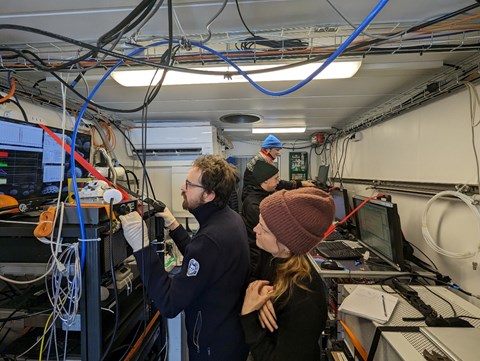
The challenge of measuring aerosol particles from Oden
Measuring ambient air and especially aerosol properties in a pristine environment such as the Arctic is a major challenge, especially when the measurements are carried out on a ship which is a major source of particles, such as emissions from engine or galley exhaust or helicopter operations. Therefore, the icebreaker Oden always had to point towards the direction of the wind so that the measurements would not be affected by the ship's emissions.
– However, the tough ice conditions made that sampling much more challenging than expected. We were often affected by ship emissions and, therefore, needed to shift our focus more on our experiments to characterize the collected water, ice and snow samples.
Contributes to the understanding of the Arctic climate system
As we already know, climate change is particularly evident in the Arctic, where temperatures are rising much faster than anywhere else on the planet. In what way can Paul Zieger's research contribute to the understanding of climate change and its effects?
– We need accurate models to predict how the climate will change in the Arctic, which also affects our climate here in Europe. There are still many uncertainties surrounding aerosols and their impact on clouds in the Arctic. Our project will provide new fundamental knowledge about the sources and processes of aerosols and their importance for clouds. It will help us improve our ability to better understand the Arctic climate system and predict future climates here and in the Arctic.
Paul Zieger is very positive when he finally summarizes his strongest impressions from ARTofMELT.
– There are many unforgettable memories from this expedition. We had these tough ice conditions where Oden struggled, often disrupting our plans. On the other hand, the fantastic group of scientists, crew and support staff made the atmosphere very positive, productive and warm. It was a great and successful expedition for us!
Aerosols
Aerosols are small particles that are finely divided in a gas, for example in the air. The particles can be either solid or liquid, and the aerosol includes both the gas and the particles. Typical examples of aerosols are smoke, fog and air pollution. The circulation time of aerosols in the atmosphere depends on the size of the particles and on meteorological conditions.
Facts about the project
Name: Aerosol and clouds in-situ (ACI)
Researchers: Julia Asplund1, Gabriel Freitas1, Lea Haberstock1, Luisa Ickes2, Fredrik Mattsson1, Lovisa Nilsson3, Jennie Spicker Schmidt4, Stella Papadopoulou1, and Paul Zieger1
1Stockholm University, Sweden, 2Chalmers, Sweden, 3Lund University, Sweden, 4Aarhus University, Denmark
Web: www.su.se/artofmelt
Financiers and partners: Vetenskapsrådet (VR), Carl Tryggers Stiftelse, ERC, EC H2020

